This post may contain affiliate links. By clicking and making a purchase through the links, I earn a small commission at no extra cost to you. See my disclaimer for more information. This and display ads allow me to keep the site up to date and give back.
Looking for the best wildlife experiences in the world? You’re in the right place! I’ve been traveling the world full-time as a digital nomad for the last five years, and getting to see wildlife is one of my favorite things to do when I’m not working.
From penguins in the south pole to snow leopards high in the Himalayan mountains, there are so many incredible wildlife destinations to explore. But with many animals on the brink of extinction, it’s more important than ever to choose an ethical animal tourism experience.
With the help of some other travel bloggers, I’ve rounded up the best wildlife experiences in the world.
These are all ethical experiences that support the conservation of these incredible animals, so you can feel good about doing them while having an amazing experience.
Best Wildlife Experiences in the World: North America
1. Whales & Puffins in Newfoundland
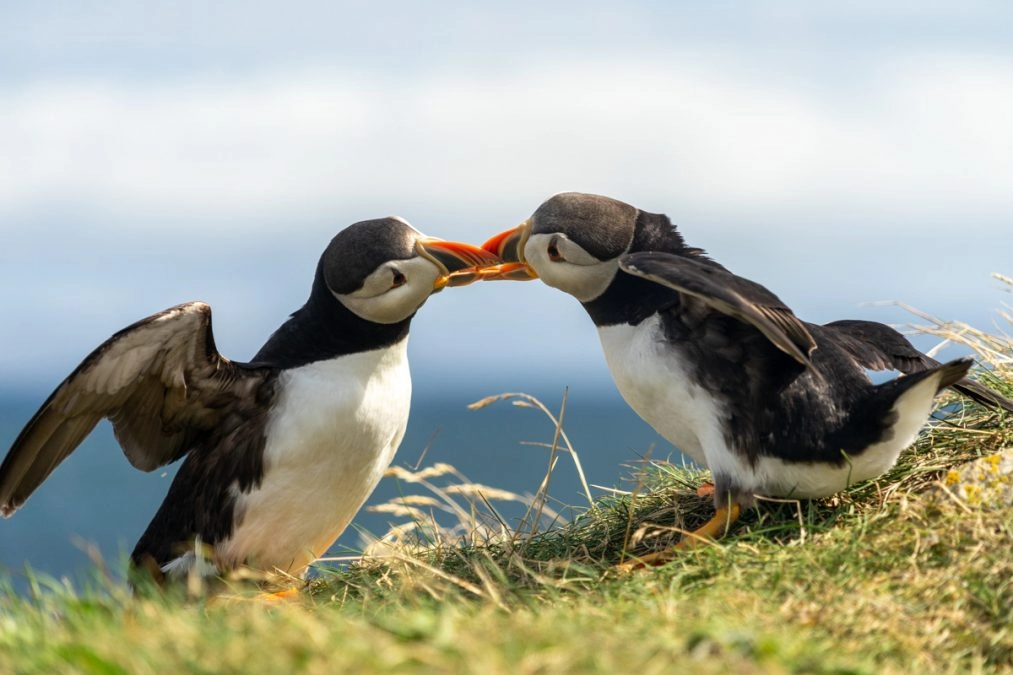
Newfoundland is one of the best places to go whale watching in the world. It’s home to over 22 species of whales, including thousands of humpbacks that make their way to the coast every summer to feed.
There are many places to see whales in Newfoundland, but one of the most ethical is Hare Bay Adventures in Central Newfoundland. I went on an amazing four-hour whale watching tour with them this summer. We were the only boat in the water, surrounded by dozens of whales! No chasing was required, we simply parked the boat in the water and the whales came around us to show off.
On a whale-watching tour in Newfoundland, you’ll likely see puffins as well. These adorable birds nest on the cliffs every summer, making Newfoundland one of the best places to see puffins in North America. You can even see them easily from land. The town of Elliston on the Bonavista Peninsula is a great place to go puffin-watching.
2. Wolves in Washington
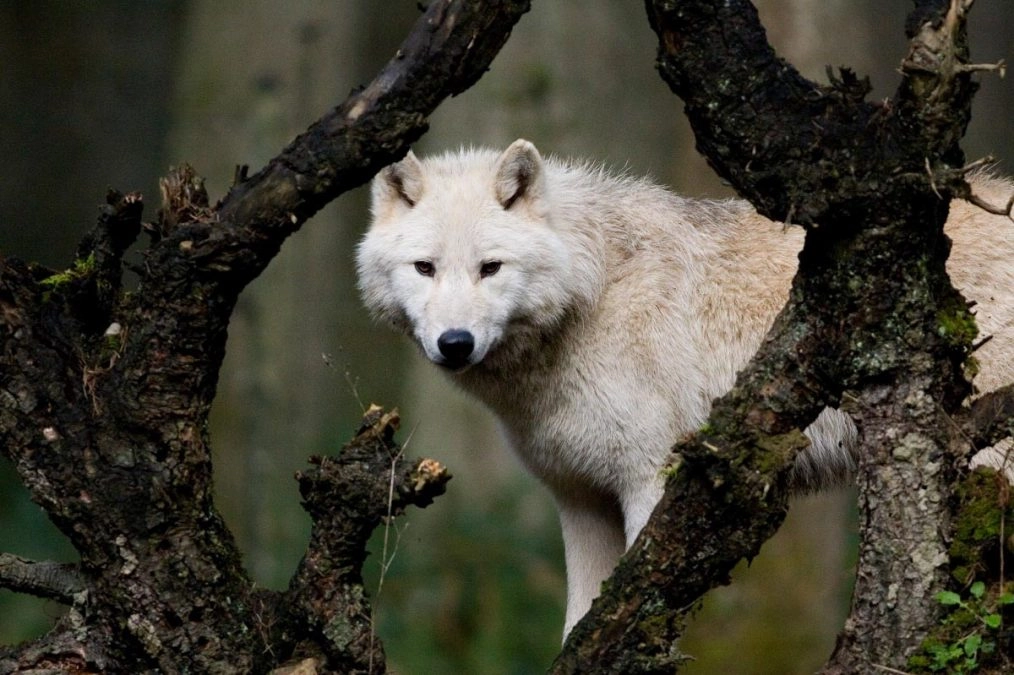
Recommended by Christa of Expedition Wildlife
Wolf Haven Sanctuary in Washington State is internationally recognized and accredited by the Global Federation of Animal Sanctuaries. Their goal is working toward the conservation and ethical treatment of, education about, and rescuing of wolves and wolf-dog hybrids.
The animals at the sanctuary are often rescued from private individuals and unethical tourism attractions. Visitors are not allowed to feed, touch, or otherwise get near the wolves. In fact, since wolves are quite shy, there are many that visitors will never see.
However, scheduled walks around the beautifully situated prairie property allow people the opportunity of potentially seeing a wolf in one of the various enclosures along a public visit route. Even if the wolves are sleeping or hiding out, the possibility of hearing the wolves howl in unison is worth the visit alone.
For those interested and who have a little more time, volunteer opportunities, including guiding guests around the sanctuary and helping with outreach, are available. Incredibly, Wolf Haven also helps with federal Species Survival Plans for the Mexican Gray and Red Wolves in coordination with the U.S. Fish and Wildlife Service.
The chances of seeing a wolf in Washington, and the rest of North America, is becoming increasingly rare, so visiting with the wolves at Wolf Haven and contributing to wolf conservation overall is a wonderful alternative!
3. Whale Sharks in Mexico
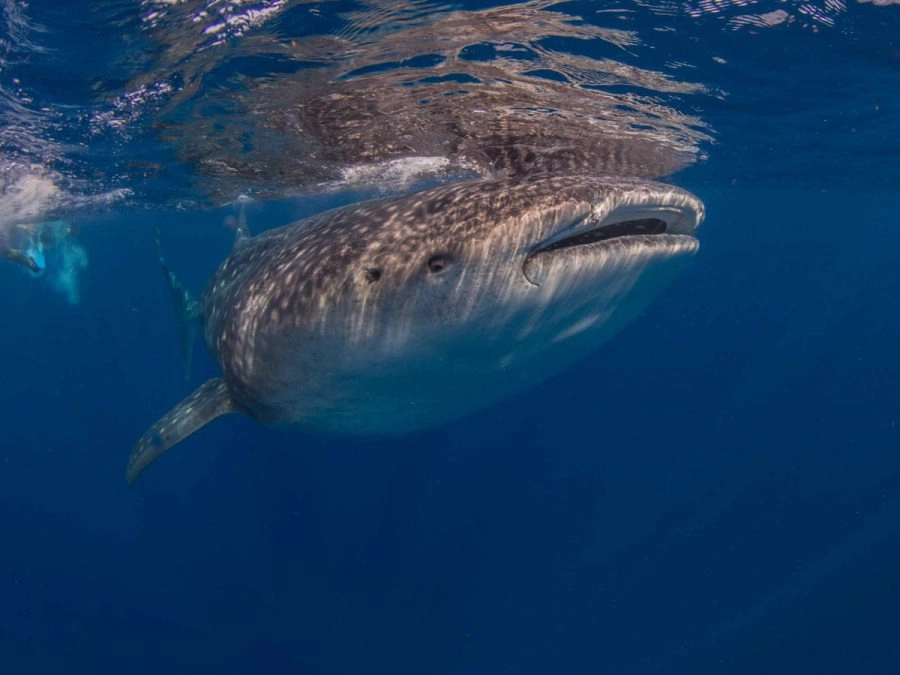
Recommended by Chris of The Aquarius Traveller
These may be sharks and larger than anything you have probably seen, but there’s no need to be afraid of swimming with these beautiful creatures.
Whale sharks are the biggest fish in the sea growing up to 40 feet (12 meters), have a life span of around 70 years, and weigh an average of 20 tonnes. Their favorite meal is plankton, which are tiny drifting organisms carried by tides or currents.
One of the best places in the world to see whale sharks is off the coast of Isla Mujeres, near Cancun – one of the top party cities in Mexico.
From June to September (the best months are July and August) the plankton is in an abundance, attracting migrating whale sharks who come filter feed through the beautiful clear waters.
This is snorkeling available for all ages, and there are many boat tours that leave from both Cancun and Isla Mujeres. You will take turns entering the water (about two at a time) and snorkel right beside the Whale Shark as it’s gliding by.
These are wild creatures and sightings are never guaranteed, however at this time of year there are hundreds of whale sharks here, so there are good chances of seeing one on this Mexico ecotourism experience.
4. Sea Lions in San Diego
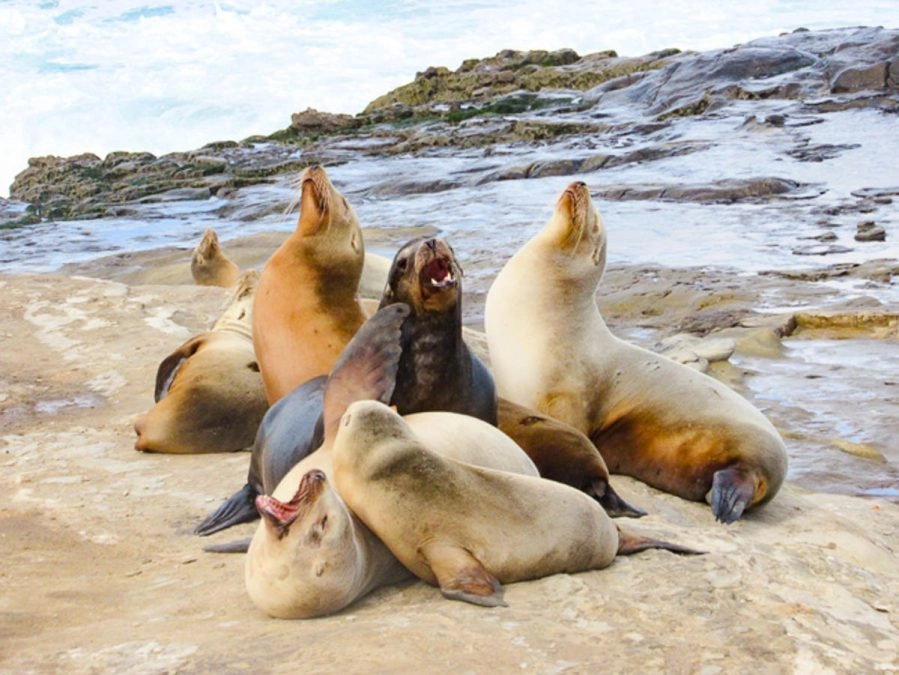
Recommended by Dhara from It’s Not About the Miles
One of the most fun things to do on a trip to San Diego is to stroll the sea wall at La Jolla Cove to observe the birds, seals, and sea lions that hang out on the rocks by the cove.
You may see La Jolla’s seals and sea lions on the beach, on the rocks, or even on the sea wall, basking in the sun. On any given morning, you can expect to see (and smell!) dozens, even hundreds, of the pinnipeds.
You are more likely to see seals in the Children’s Pool area and sea lions on the cliffs by the cove. How do you tell the difference between seals and sea lions? Seals move on land by wiggling on their stomachs, whereas sea lions walk with their flippers’ help. You may hear the sea lions bark when you are there!
Watch the seals and sea lions at La Jolla from a safe distance. If they feel threatened, they can bite. If you see them on the sea wall or close to it, give them plenty of space. If you happen to see them while you are in the water, give them room by swimming away. Never feed the pinnipeds.
Parking is available at nearby La Jolla Boulevard. The spots do fill up, so arrive early, or else park along one of the more distant streets such as Propect Street and walk to the sea wall or beach.
5. Whale Watching in California
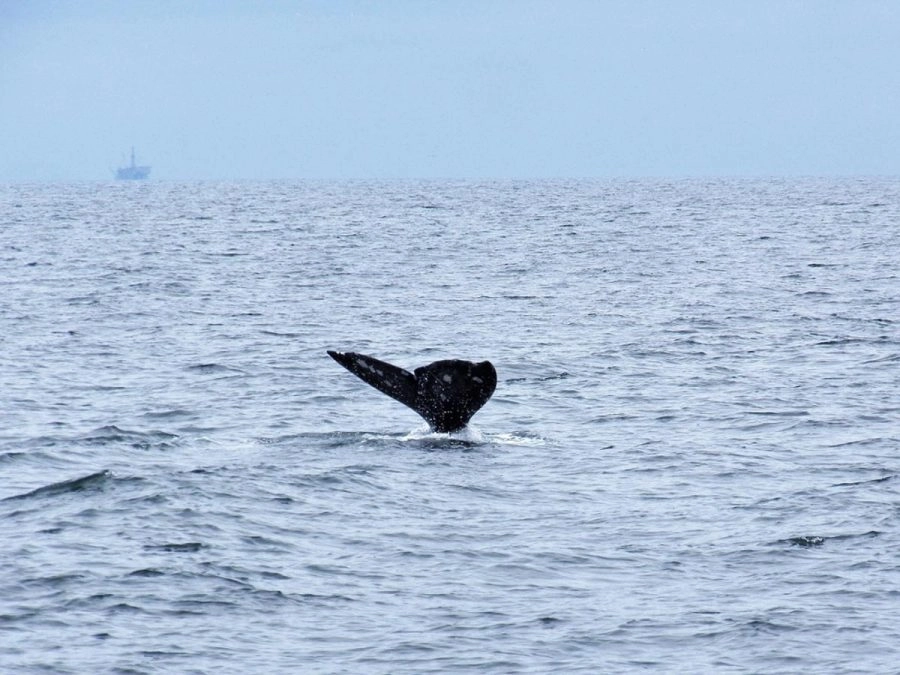
Recommended by Allison Green of California Crossroads
One of the best places for ethical whale watching in California is Bodega Bay for a variety of reasons.
For one, it’s a small town without a ton of tourist infrastructure the same way there are massive whale tourism operations in Monterey and San Diego, which can sometimes be motivated through competition with their partners to go to unethical lengths to spot whales, such as approaching whales too closely or chasing whales.
In Bodega Bay, there are only a small handful of fishing charters, which also happen to run whale watching tours during the gray whale migration season. They keep their distance and use small boats only, which do not startle the whales.
For another, it’s actually one of the best places to go whale watching in California without ever needing to take to the sea. If the idea of a whale-watching boat tour makes you a bit uneasy, you can actually see whales from the land itself at Bodega Head, which is a peninsula that juts out to one of the calmer parts of the California coastline, allowing for incredible views of whales from the promontory.
During the migration season, local docents are there at Bodega Head to help you spot whales with spotting scopes and binoculars and answer your questions about the whales and their yearly migration.
So whether you prefer to see whales up-close by boat or far-off by land, Bodega Bay offers both so you can be sure your whale watching experience in California is ethical and enjoyable.
Best Wildlife Experiences in Central & South America
6. Sea Turtles in Costa Rica
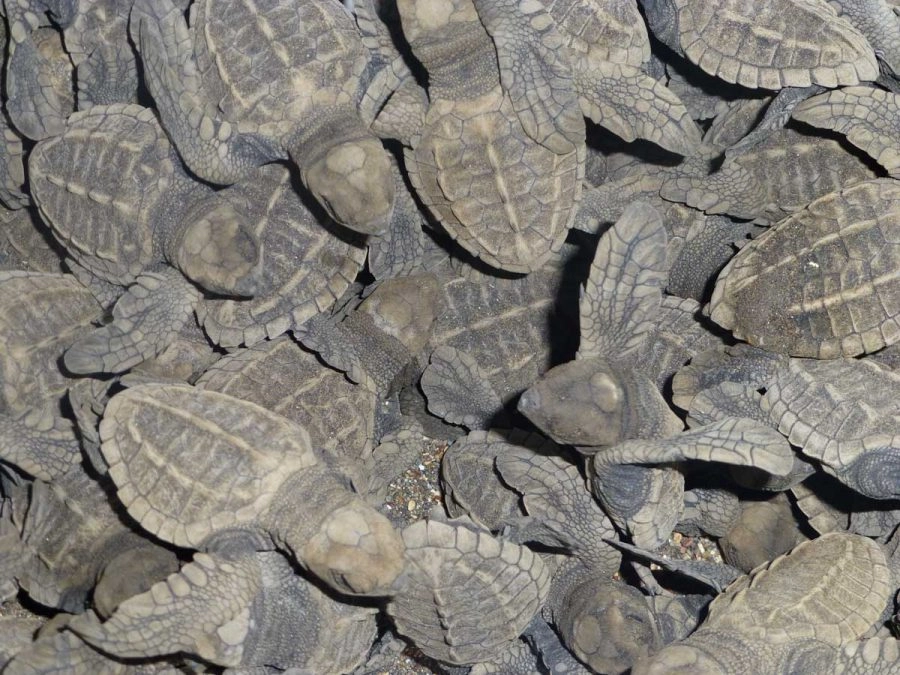
Recommended by Josh and Sarah of Veggie Vagabonds
There are some wildlife experiences that completely blow you away, stick with you forever, and become an ingrained memory of your time overseas. Witnessing an olive ridley arribada is one of those experiences, but, unless you’re particularly interested in marine animals, it’s quite likely you haven’t heard of it.
The olive ridley is a sea turtle found along tropical waters around the world. It’s unique because it nests in a phenomenon known as an arribada, or arrival in Spanish. This is where tens to hundreds of thousands of turtles come to shore to lay their eggs on the same beach over the course of a few days.
To see it first hand is one of the most mesmerizing and enchanting wildlife spectacles you’ll find, especially as it only happens once every few years. Each turtle will lay 100+ eggs, so there could literally be millions of eggs on one small stretch of beach!
One of the best places to see this happen is Costa Rica, particularly the beaches Ostional and Nancite. It’s not known exactly when the turtles will come, but it’s typically at night on a full moon. It’s their natural way of nesting, so as long as you’re respectful, watching the phenomenon is completely ethical.
If you do go to try and spot them, remember to keep your headlights off, don’t interfere with nesting turtles, and mind where you’re standing so you don’t step on any nests!
7. Monkeys, Birds, and More in the Ecuador Amazon
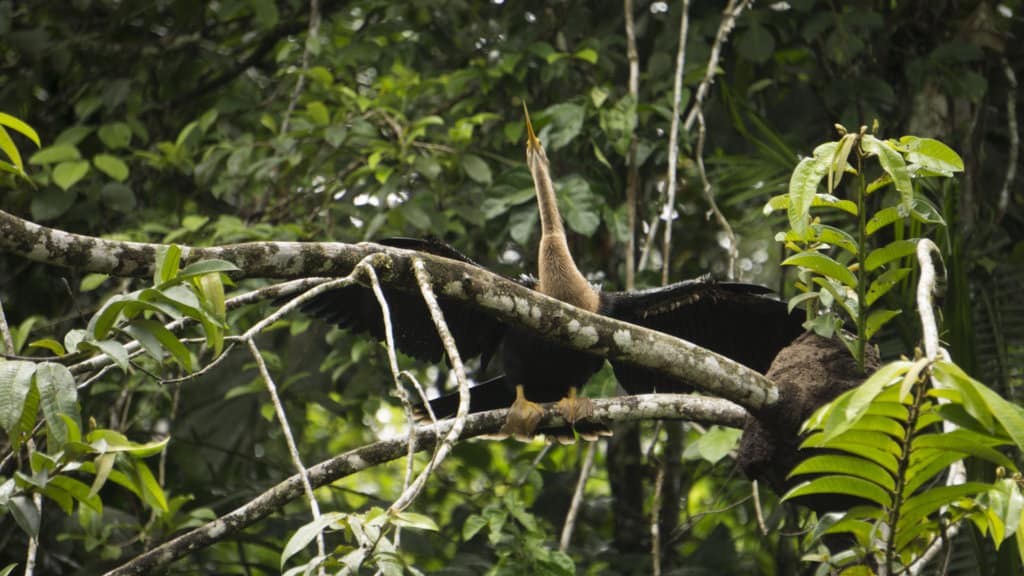
The Ecuador Amazon is one of the most bio-diverse places on the planet, making it one of the best wildlife experiences in the world. While the amazon is spread across nine countries in South America, Ecuador is a perfect choice given its eco-friendly lodges and affordable river cruises.
During my stay at the Siona Lodge on the Amazon river, we took river cruises and hikes to see the various wildlife. Some of the highlights were six species of monkeys, toucans, blue and gold macaws, a baby anaconda, and sloths. We even saw river dolphins jumping out of the water! Cruising down the amazon river is an unforgettable experience that should be on your South America itinerary.
8. Giant Tortoises on the Galapagos Islands
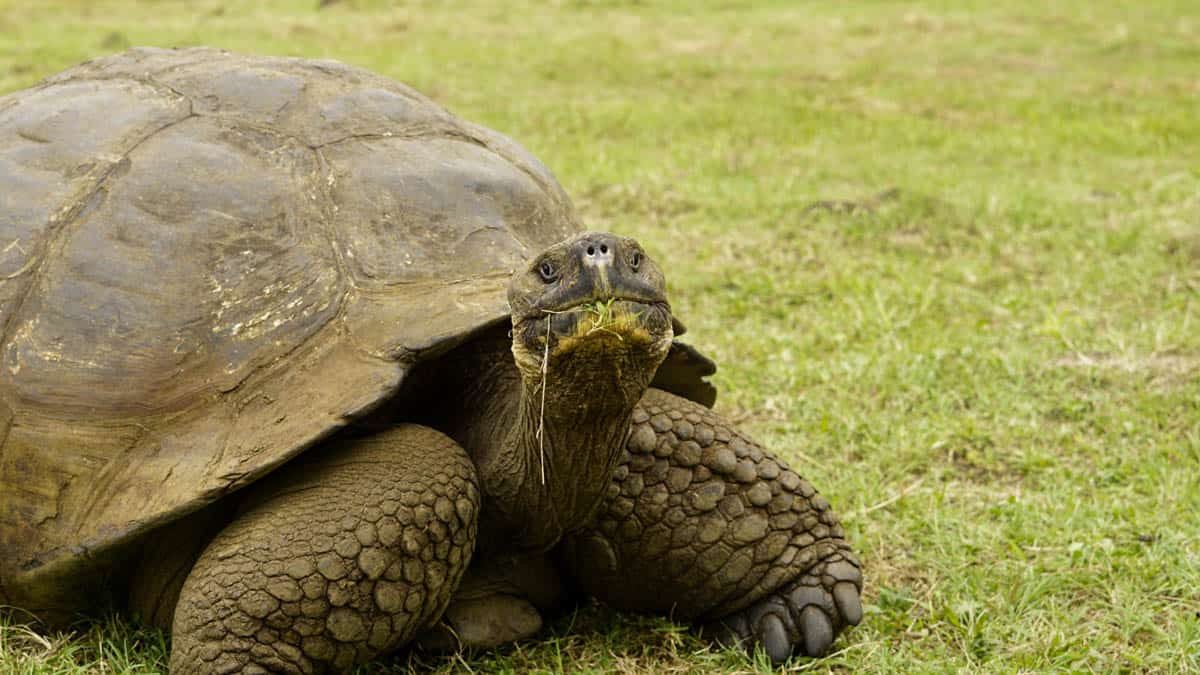
The Galapagos Islands are an absolute dream for nature and wildlife lovers. The islands are home to some of the most unique animals on earth such as the blue footed booby. And for the most part, they have no fear of humans. Every time I would go swimming in the ocean in the Galapagos, a playful sea lion would come over to say hi. You’ll have to share the beaches with them as well!
One of the most amazing wildlife encounters to have on the Galapagos Islands is to see giant tortoises. They are the largest on earth, with an average lifespan of over 100 years! The best way to see them is on a highlands tour on Santa Cruz island. It’s one of the cheaper Galapagos day tours so don’t miss this one!
9. Bird Watching in Patagonia
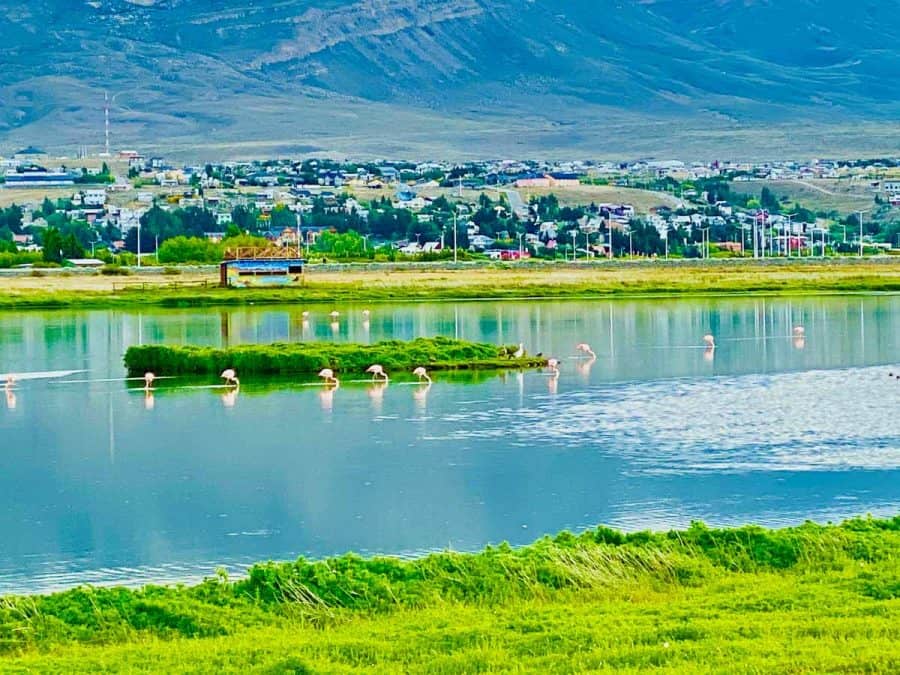
Recommended by Usman of Brown Boy Travels
El Calafate is full of intrigue for any visitor to Patagonia and while the majority of it is related to the landscape, it is also blessed with plenty of wildlife.
Laguna Nimez is a beautiful spot kept as a bird sanctuary right next to Argentina’s second-biggest lake (Lago Argentino). This small patch of land has been carefully reserved for the many bird species that live or pass by on their way north or south.
The entrance for the reserve is ARS 500. When you enter, the staff will provide you with a small map of the trail around 3kms and some details of the many species of birds that you can observe and watch here.
The trail has places where you can watch these gorgeous creatures without disturbing them in their natural habitat. The variety of the birds is also amazing, from swans to ducks and the glamorous pink flamingoes.
It is a beautiful place to visit in the evenings. There aren’t many people, and the sunset is the perfect time to enjoy Lake Argentina, the reserve, and its residents in utter tranquility.
Please note disturbing the birds, feeding them, or getting too close is strictly prohibited, and you must follow the trail when in the reserve.
10. Dolphins & Sea Turtles in Brazil
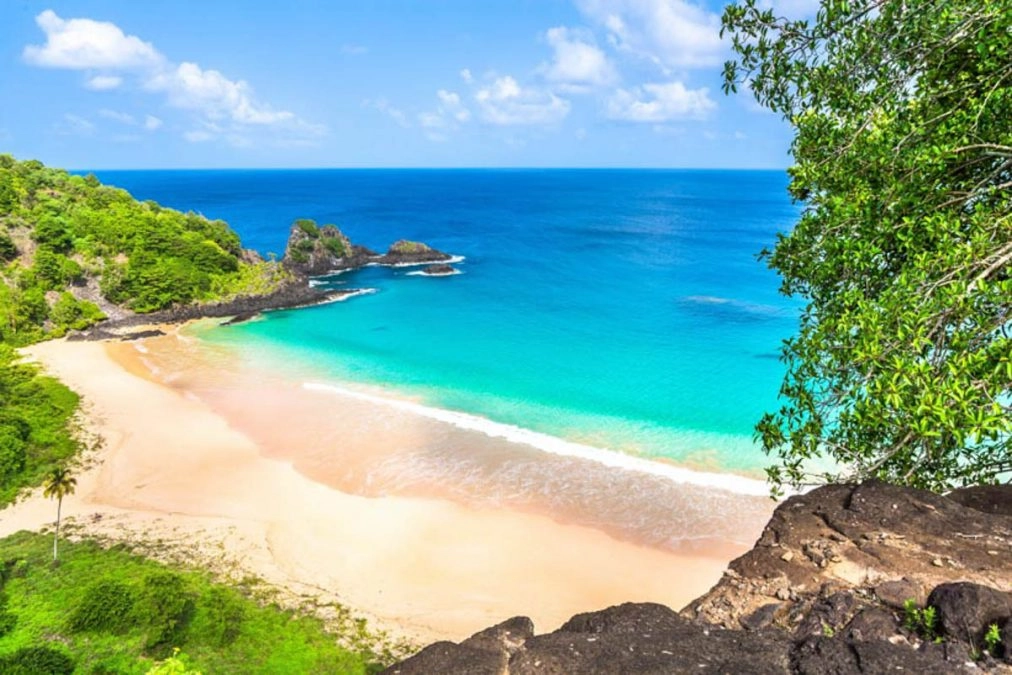
Recommended by Bruna of I Heart Brazil
Fernando de Noronha is a mesmerizing archipelago off the northeast coast of Brazil and a unique place to have an ethical wildlife experience. This archipelago is a paradise not only because it protects fantastic wildlife but also because it boasts some of the prettiest Brazilian beaches.
To have access to this paradise, tourists must pay an entrance fee (which is about R$222) and a daily environmental preservation fee (somewhere around R$75/day), which are aimed to protect and support this fragile ecosystem.
In the same breath, tourists cannot wear shoes or even sunscreen on a few beaches as the responsible preservation institute (ICMBIO) wants to protect the rare local fauna and flora.
Countless fish species, dolphins, corals, and even sea turtles happily enjoy their untouched world in the waters surrounding the island—this marine national park is a mecca for wildlife lovers.
Some of the things you can do here is spotting dolphins, watching sea turtles’ eggs hatching on the beach, and scuba diving in a sea teeming with wildlife! Visitors who want to connect with nature will have a blast at this place!
If you want to have an ethical (and unique) wildlife experience in a place where the only goal is to preserve animal life, Fernando de Noronha is your best bet!
11. Penguins in Argentina
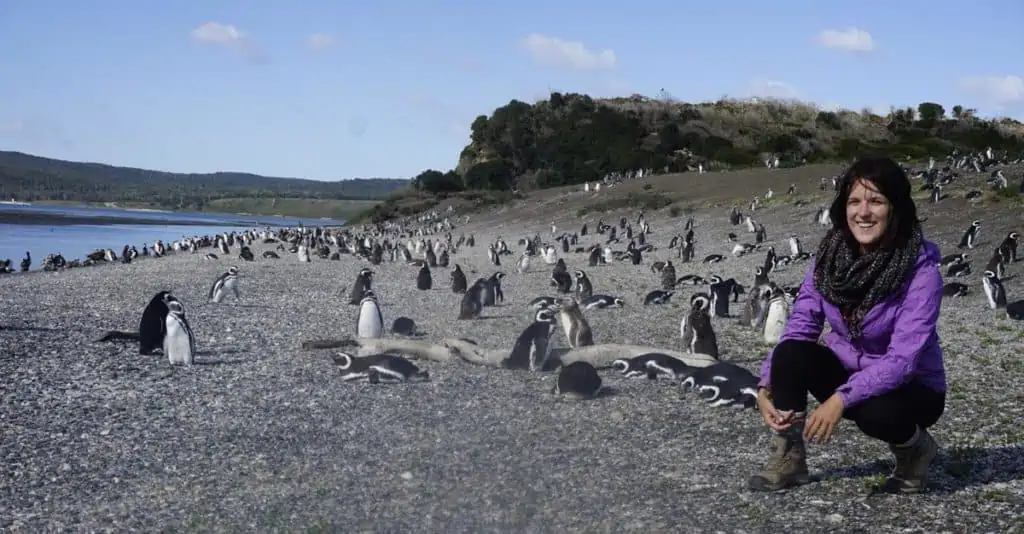
One of my favorite wildlife experiences to date is walking with penguins in Ushuaia, Argentina. This adorable tour takes you to Martillo Island, where a large colony of Magellanic penguins live. There’s also a small colony of gentoo penguins that live here, and sometimes king penguins.
It’s one of the best places to see wild penguins, and the tours are run ethically. Capacity on the island is limited to twenty guests at a time, so there is plenty of space for you and the penguins. The best time to visit is from November to March, as after that the penguins start heading north.
Best Wildlife Experiences in Europe
12. Puffins in Faroe Islands
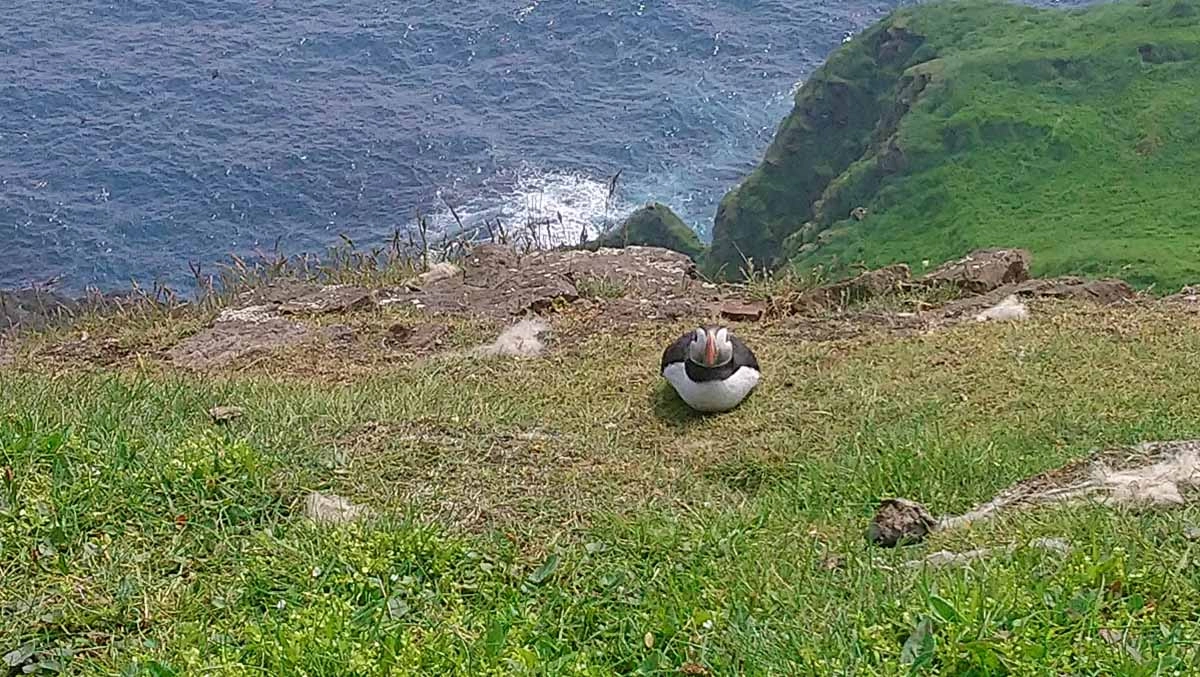
Recommended by Albi from Ginger Around The Globe
The Faroe Islands are well known for their wild nature and stunning views. But it is also one of the main hubs for puffins. One specific island in the Faroe Islands has more of these birds than anyone else, and that is Mykines.
Mykines is one of the best places to see puffins in the wild. Every summer, there are thousands of them flying around and breeding in the cliffs. There is only one hiking trail in Mykines, which leads you through the puffin colony.
The hike is designed to ensure the birds stay unharmed. It is far enough from the visitors but close enough for seeing puffins with your own eyes that binoculars are not necessary. Because puffins numbers are going down, there is a special hiking fee dedicated to keeping this colony alive. Only a certain amount of visitors can come here each time.
At the start of the trail, there is a sign explaining how to treat puffins ethically. For example, it is prohibited to go close to them, or the cliffs as this is where puffins build their nests, and by going on the edge of the cliff, it can easily break the nest. Besides puffins, the views on this hike are stunning. It’s not only a great way to see puffins ethically but enjoy some of the gorgeous landscapes of the Faroe islands!
13. Donkeys in Spain
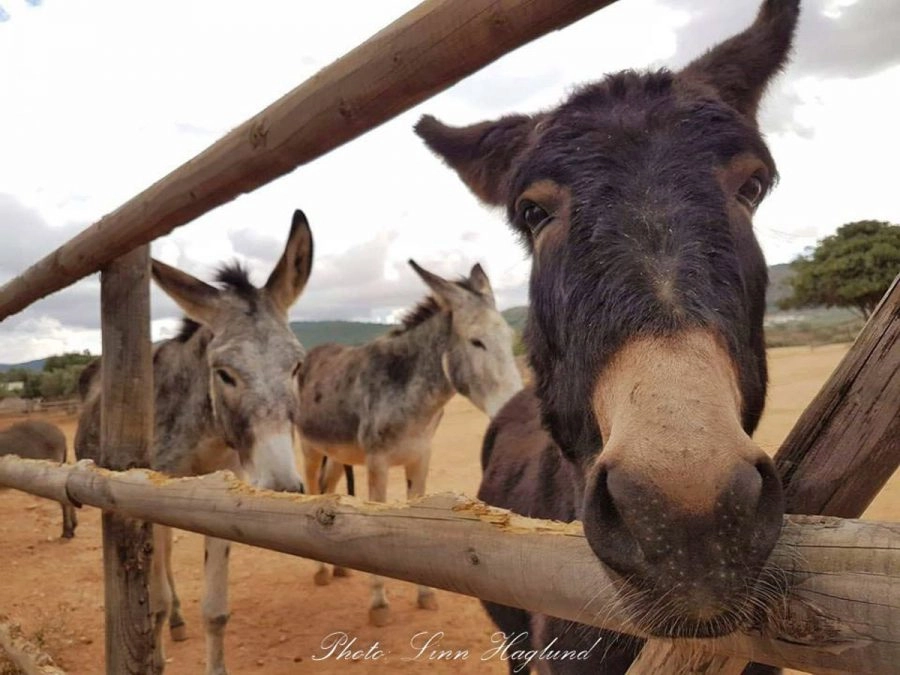
Recommended by Linn Haglund of Brainy Backpackers
The number one place to interact ethically with donkeys and mules in Spain is at El Refugio del Burrito in Fuente de Piedra in southern Spain. The donkey sanctuary works with SEPRONA (Nature Protection Service of the Civil Guard) in rescuing abandoned and maltreated donkeys and mules from all over the country.
They will look for adoption for the animals that are healthy, while the sick animals come to the sanctuary where they will receive medical treatment for as long as they need. Some of these get adopted once they get better, while others that might need lifelong treatment or have been through excessive distress and maltreatment stay at the sanctuary for the rest of their lives.
Here they get the chance to interact with other donkeys and behave like donkeys. It is natural behavior for donkeys to find a partner for life. Sometimes they partner up 3. Once they have found their partner(s), they do everything together, play, eat, sleep, and so on. When they live in the sanctuary, partners are never separated and when one dies, they let the partner(s) mourn by the deceased. The animals also have great space to run and play and never lack food. But most importantly, they get lifelong love from the caring volunteers that work there.
The Refugio del Burrito is open for visits for a small donation at entry. You can also pay a bit more for a guided tour (at certain times a day) that includes donkey cuddles in the paddock, on the donkey’s terms. But most of them love to come over to get scratches and cuddles. Other ways to support, is to volunteer or to “adopt a donkey” by donating a monthly amount for a specific donkey of choice that lives there.
Best Wildlife Experiences in Asia
14. The Greater One-Horned Rhino in Nepal

The greater one horned rhinoceros is a rhinoceros native to the Indian subcontinent. It is the largest of all the rhinoceros species and is listed as vulnerable by the world wildlife foundation.
The species was once on the brink of extinction at the end of the 20th century, with fewer than 200 left in the wild. Poaching is the biggest threat to the one-horned rhino, driven by the demand for rhinos’ horns.
Thanks to strict protection and management from India and Nepal, the greater one-horned rhino is a conservation success. The population is now back up to 3,500!
Nepal’s one-horned rhino population has been increasing, and there are now over 600 rhinos in the country. Most of these are in Chitwan National Park, where I was lucky enough to have several encounters.
On my first day at the park, I saw a rhino without even being on a safari. All of the lodgings for guests is in Sauraha, a small village close to Chitwan National Park. We took a walk around the village and, within 15 minutes, saw a rhino.
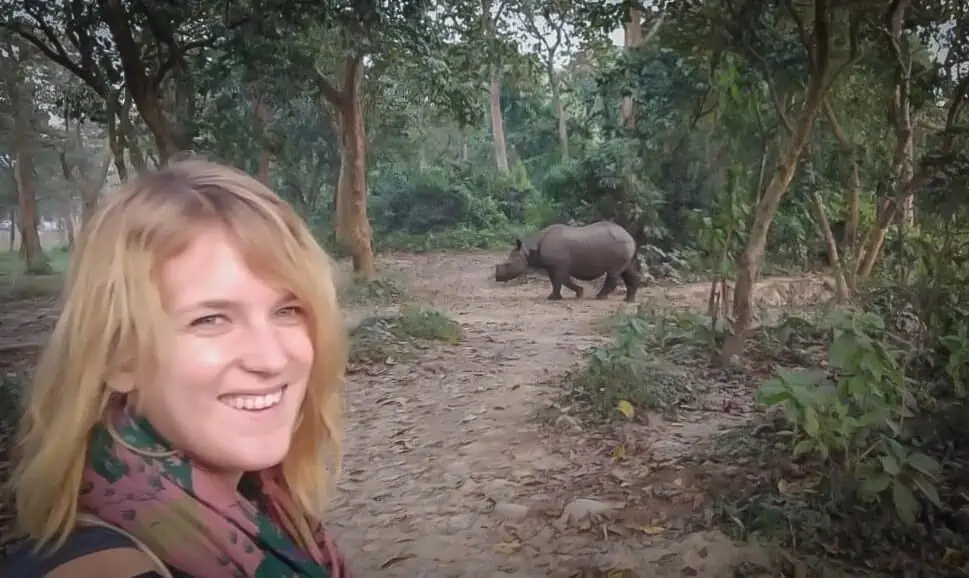
On my safari the next day, a mama rhino and her young walked out onto the road right in front of us. They stopped and paused for a minute to check us out (just enough time to take a picture) and then continued on their way. I couldn’t believe my luck; the baby rhino was only a month or two old. How cute!
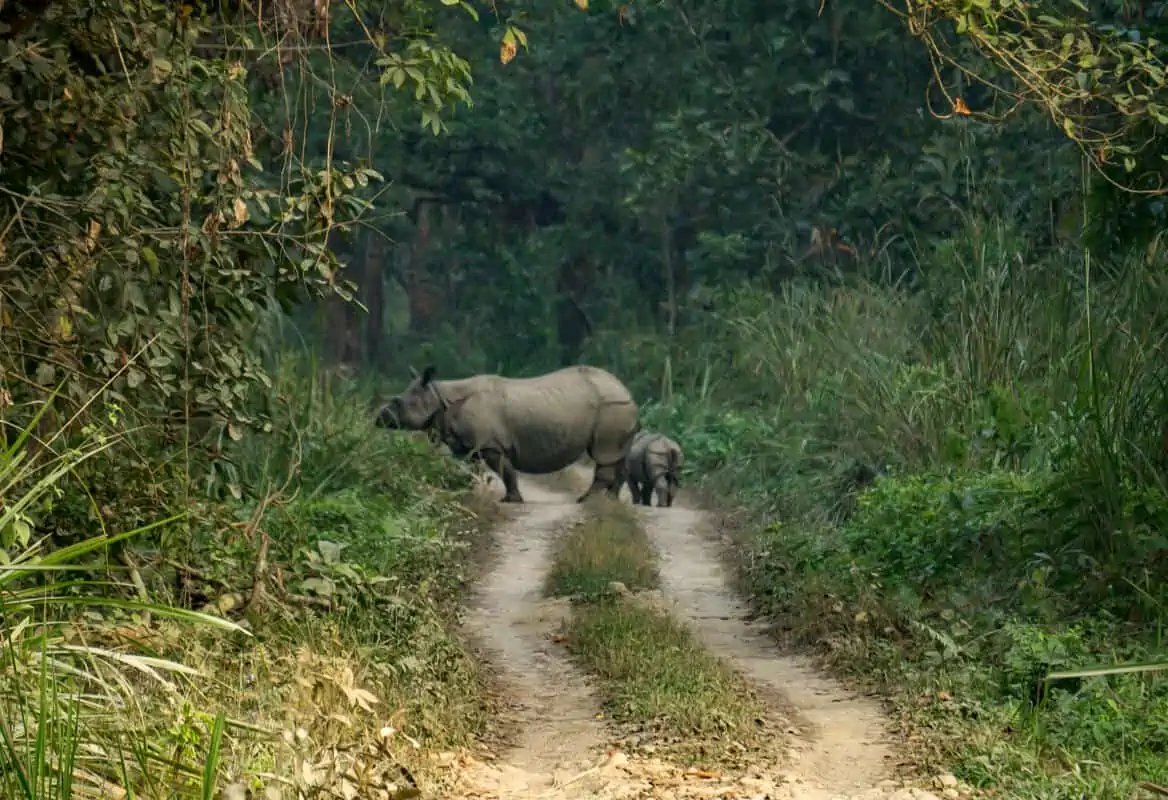
15. Manta Rays in the Maldives
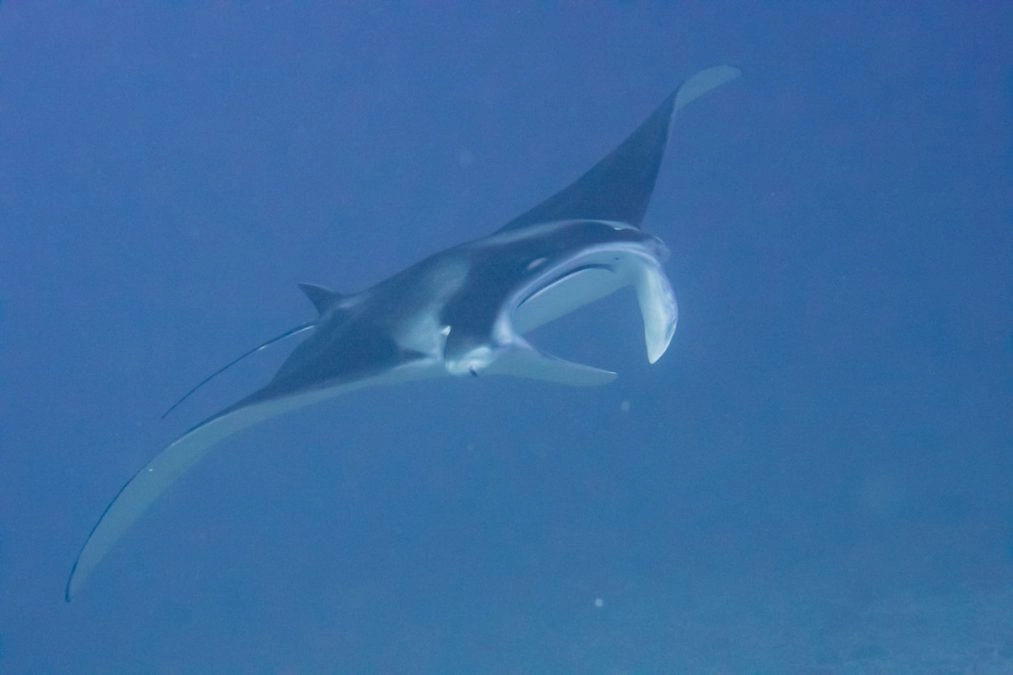
Recommended by Suzanne of Meandering Wild
The Maldives are a chain of small islands in the Indian Ocean. They are mainly uninhabited, and the wildlife that visits is unique. Manta rays are large pelagic fish with a unique shape. Their pectoral fins are triangular, and they have cephalic fins that curl and uncurl as they move.
Manta rays can be found in the Maldives year-round, but they move with the plankton. They are on the Atolls’ western edges from November to April, moving to the east from May to October. The best time of year to snorkel or dive with them is December to May when the weather is calm, and the visibility is good.
Diving and snorkeling with manta’s in the Maldives is heavily controlled, and there are just three places that they can be seen and only then as part of an organized tour. These are Addu Atoll in the far south, South Ari Atoll, and Hanifaru Bay on Baa Atoll. The number of people visiting each area is controlled with limits on the number of people each day entering the water. This means that the manta rays are not disturbed for long periods of time by large numbers of boats or divers.
16. Bears in Laos
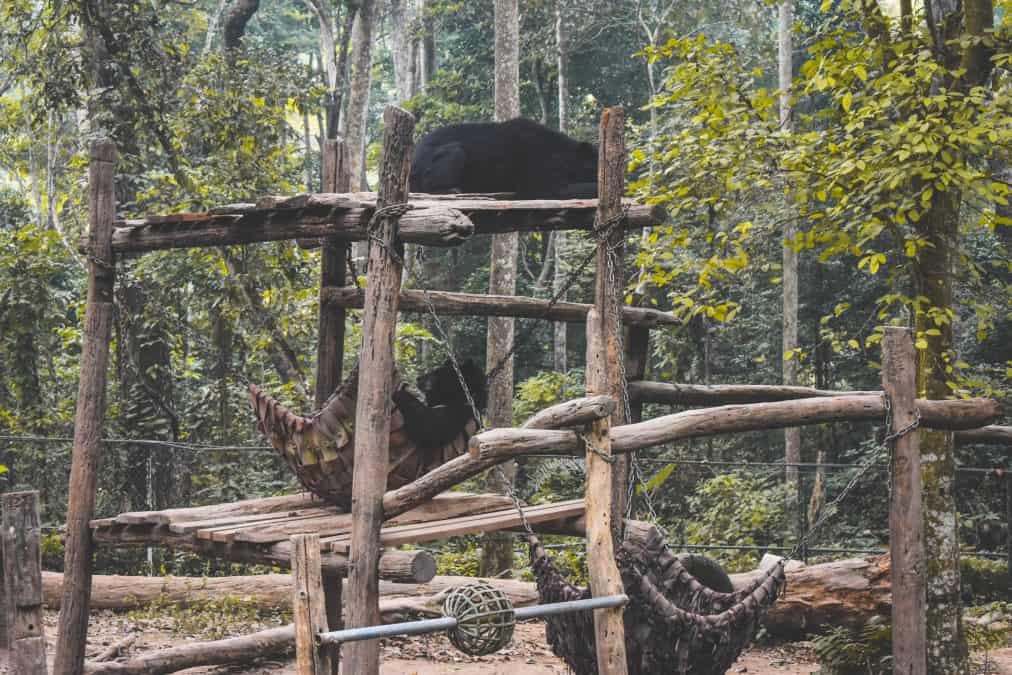
Recommended by Claire of Stoked to Travel
Tat Kuang Si Bear Rescue Centre is located in the north of Laos, near Luang Prabang. This wonderful ethical bear sanctuary is part of the not-for-profit foundation called Free the Bears, which has so far rescued more than 950 bears from across the world. Most of them are moon bears, sun bears, and sloth bears, which are some of the world’s most vulnerable bear species.
Some of the bears were used as performers in shows, some kept as exotic pets, and some have been poached, sold on, and then kept in tiny cages. One of the reasons for this is that there is a belief in certain countries that the bile from their gall bladder has medical properties. It is so extreme that there are even bear bile farms – as many as 10,000 in China.
The Tat Kuang Si Bear Rescue Centre is home to around 25 rescued bears. They have amazing playgrounds to enjoy and a safe, secure home. The center also provides essential training and valuable employment opportunities to locals, ensuring that the community understands and contributes to the bears’ safety and future. The goal with many of the bears is to release habilitated bears back into protected areas of forest.
This wonderful ethical animal experience is one of the best things to see in Luang Prabang. It’s a 30 or so minute tuk-tuk drive from the center of Luang Prabang and is located at the Kuang Si Falls entrance, one of the most popular attractions in the area. The sanctuary has built a bear trail so that all visitors can follow this on their way to the waterfalls.
17. Snow Monkeys in Japan
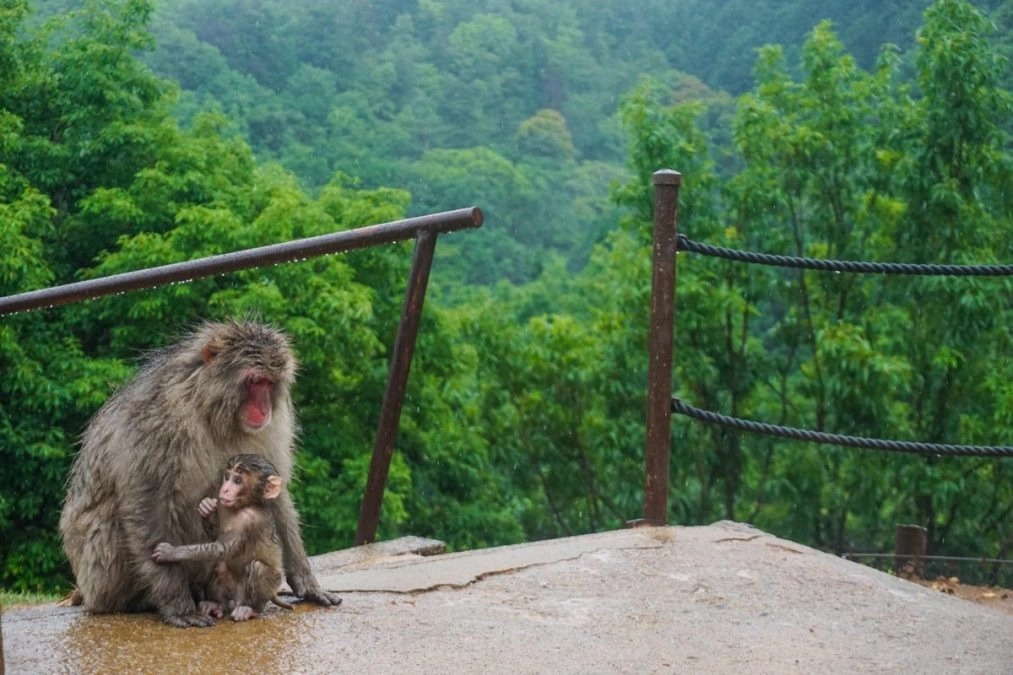
Recommended by Vicki of Vicki Viaja
One of the highlights during our trip to Japan was definitely Kyoto. In addition to countless breathtaking temples, one particular experience remains in our memories: Kyoto’s Iwatayama Monkey Park.
The park is located on a mountain right next to the famous Arashiyama Bamboo Grove. After entering the park and having received a little briefing on the rules of conduct for the animals in the park (no touching, photography with flash, etc.), a small trail leads to the top of the mountain.
With a bit of luck, you can spot some snow monkeys along the way. The animals roam free in the park, so there is, of course, no guarantee that you will see them on your way up.
There are usually a couple of monkeys hanging out on top of the mountain because a small visitor building is located there. Inside the hut, you have the chance to buy some food for the animals. However, if you want to feed the animals, you have to stay inside a kind of cage. From there, you can hold your open hand out with the food. Hungry monkeys can then help themselves.
In this way, contact with the animals can be established without harassing them. Because since the monkeys can move around freely, they always have the chance to leave if they want.
18. Leopards in Sri Lanka
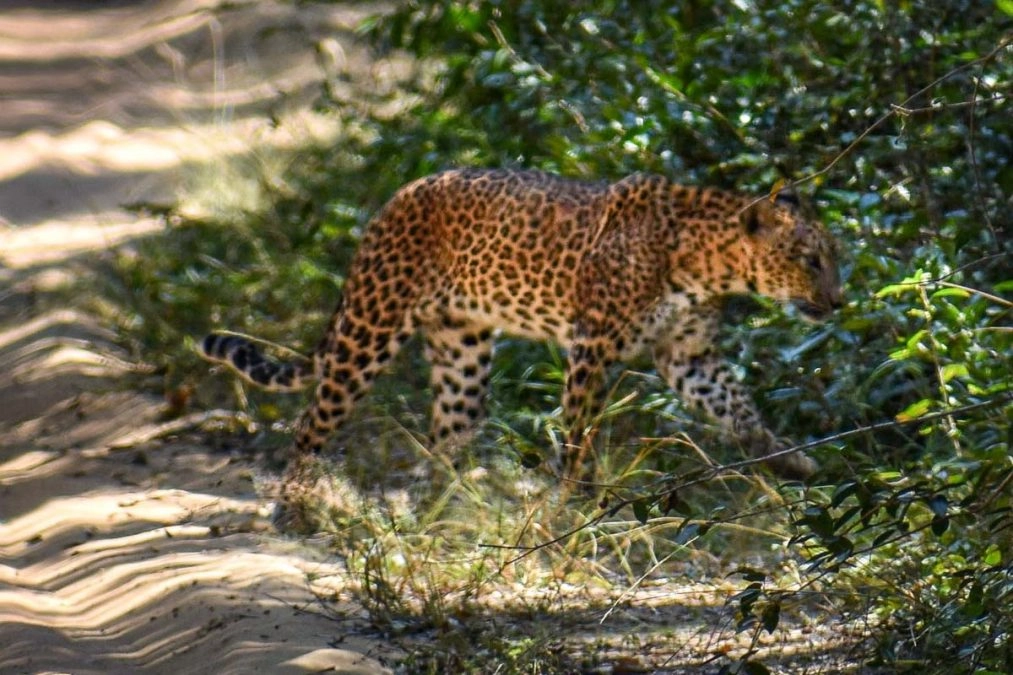
Recommended by Geena of Beyond The Bucket List
I travel the world almost solely for animal encounters. Ethical ones, of course, and not a single country comes close to Sri Lanka in the sheer amount of wildlife experiences you can have.
My personal favorite was Wilpattu National Park. Much like the famous Yala National Park, but more rugged, lesser-visited, and offering all-around more authentic animal encounters.
Visitors can expect to see wild elephants, sloth bears, jackals, crocodiles, mongoose, deer, hornbills, Hanuman langurs, macaques, and hundreds of species of colorful native birds. But the real tourist draw is the chance to see wild leopards.
The animals in this park are 100% wild, and the only way to visit is by hiring a local guide and jeep driver to drive you through the sprawling park. You can choose from half-day or full-day visits ($80 for an entire jeep), and you’ll start bright and early for the best chance at seeing a leopard. Dawn and dusk are the most active times for wildlife in the park.
You won’t get up close and personal with any animals in this encounter but being within 25 feet of a wild elephant, and 50 feet of a prowling leopard is a feeling you just won’t get anywhere else.
19. Giant Pandas in China
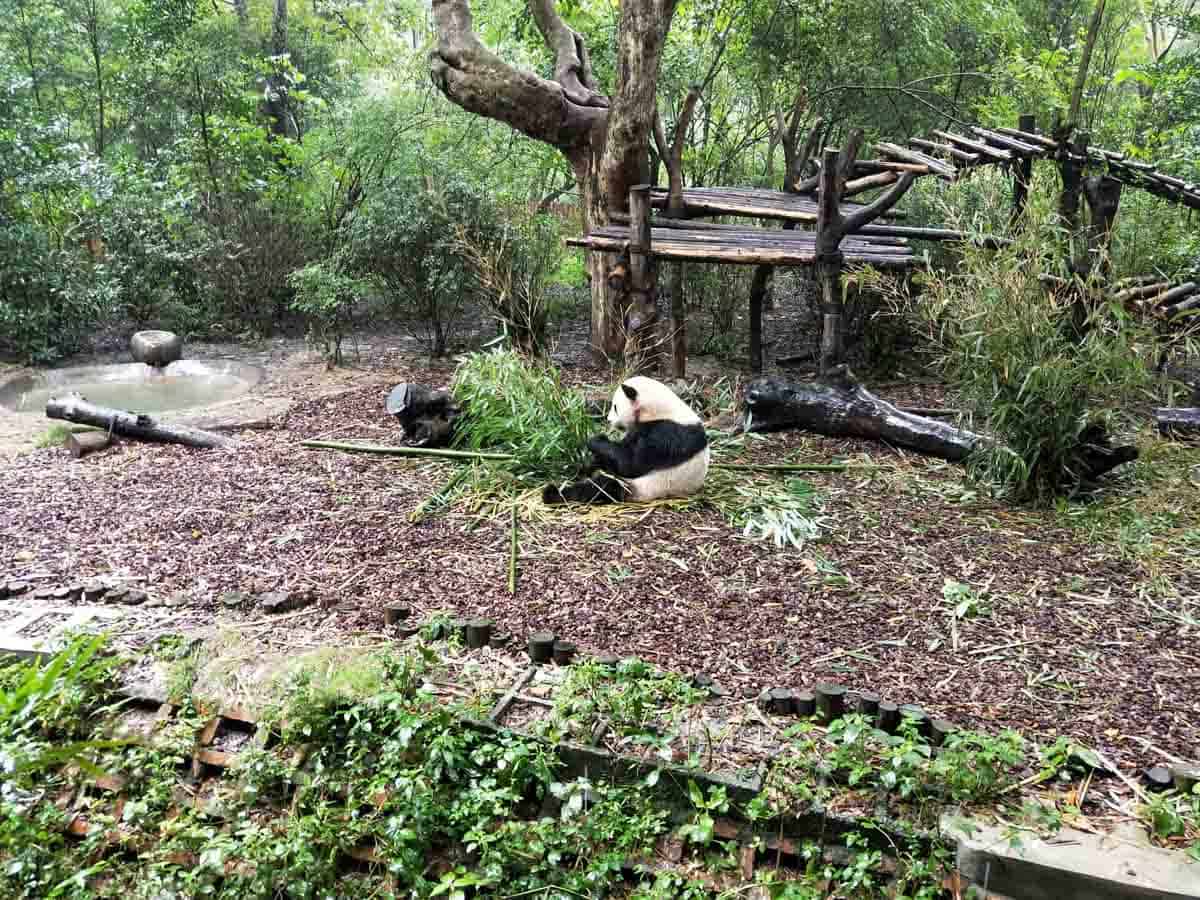
Recommended by Bec of Wyld Family Travel
Pandas are a fascinating animal that so many people want to see. For a long time, pandas were an endangered species due to deforestation, farming, and other development in the areas where they lived.
The Chengdu Giant Panda Base is helping to make sure pandas are on the earth for many years to come, with their research and breeding center. While visiting the Giant Panda base, you can learn about how the program has brought the species back from being endangered.
Located in Chengdu, China, a visit here allows you to see the pandas up close, living a peaceful life surrounded by plenty of bamboos. They are free to roam in large enclosures modeled as close to what their home habitat would be like.
Some prefer to sit and chew on the bamboo, some you will see high up in the tree, and some are happy to put on a show playing with friends. Whatever they are doing, it is incredible to be close to these amazing animals.
There are many sections in the park. Most are outdoor enclosures that are guarded by fences, so people cannot get too close to the pandas. One place that cannot be missed is the Sunshine Nursery House. Here you can see the baby pandas sleeping peacefully. This is one of the most popular sections of the park, and you may have to line up for a while to be allowed in to see the babies. If you are lucky, there may also be some toddlers in there sleeping or being cheeky.
If anyone is planning a trip to China, the Chengdu Giant Panda Base should be high on your list of places to go. It’s not only for foreigners, but locals also love to visit here. You need to be there about 30 minutes before opening to get in line.
20. Pgymy Elephants in Borneo
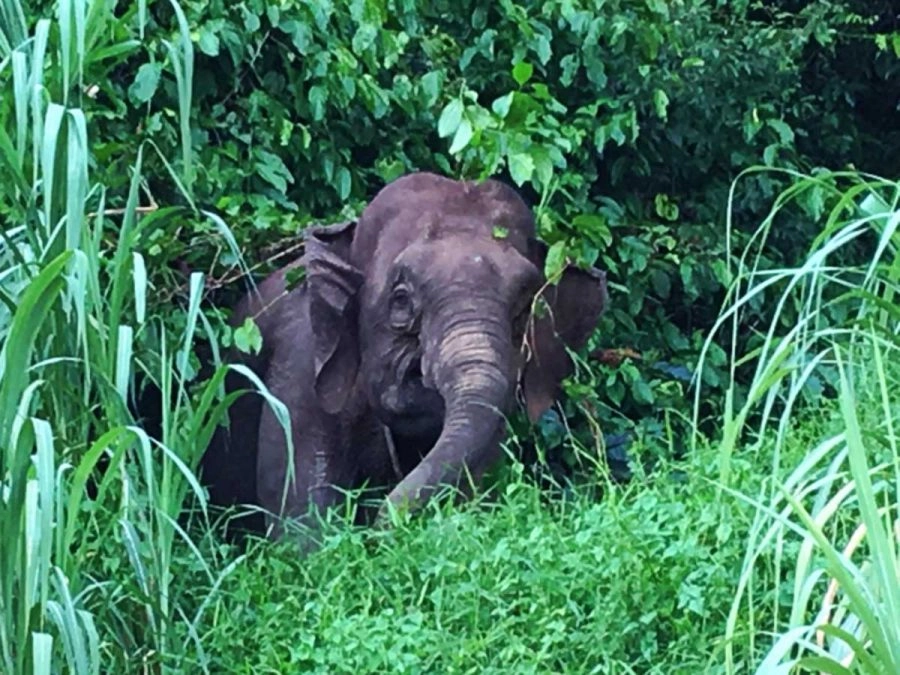
Recommended by James Ian at Travel Collecting
One of the most incredible ethical animal encounters you can have is with pygmy elephants in Borneo. Pygmy elephants, which are smaller than other elephants, but certainly not tiny, are endemic to Borneo and are endangered due to habitat loss. However, it is possible to see them without impacting them because you see them from a small boat on the Kinabatangan River as they come down to the river bank to drink.
About three hours upstream in a speed boat from Sandakan in the Sabah area of Malaysian Borneo is an area with several river eco-lodges. The lodges run early morning, late afternoon, and night cruises in small boats in the local area to see wildlife such as proboscis monkeys, macaques, and hornbills. However, many also run day time trips further upriver to try and see pygmy elephants.
As with all animal encounters in the wild, sightings are not guaranteed. However, local guides know the area where the elephants are currently located on their seasonal migration, so chances are reasonably good. In the late afternoon, the elephants appear through the underbrush and can be seen eating grass and drinking down by the river’s edge.
Seeing these amazing animals in the wild and knowing that, because you are viewing them from a boat on the river, that your presence has minimal impact on them, is a truly unique and awe-inspiring experience.
The Kinabatangan River is also one of the best places to see orangutans in the wild!
21. Tigers in Nepal
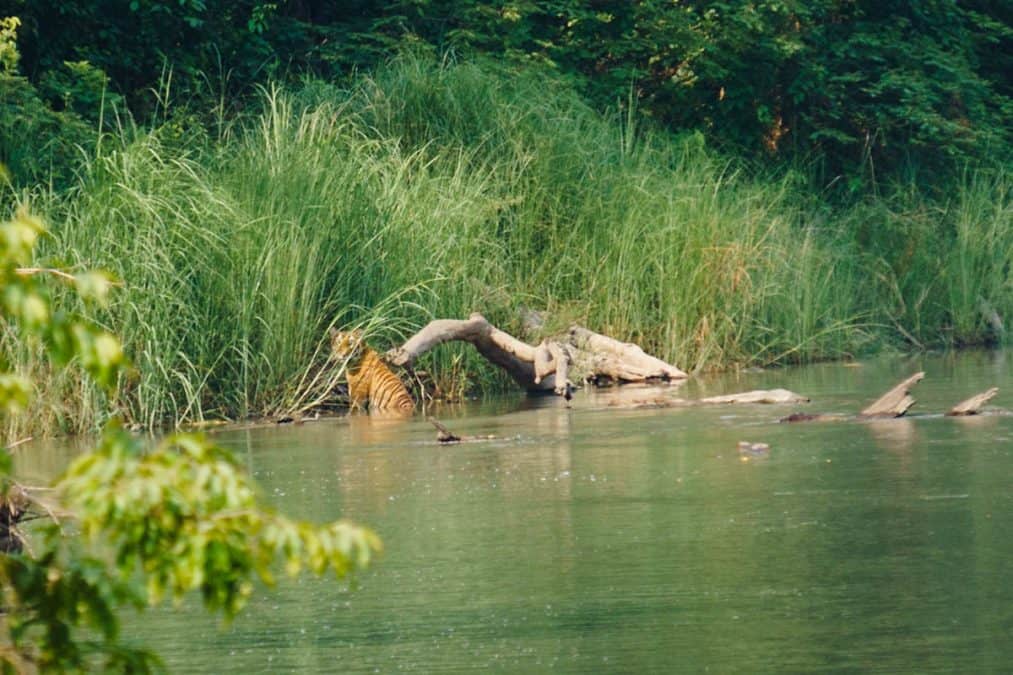
Recommended by Thea of Zen Travellers
Tracking tigers through the rain forest is not the first thing that comes to mind when people think of traveling in Nepal. While trekking to tea houses in the Himalaya mountains is a must-do when visiting the Asian nation, a trip to the lesser-known gem called Bardia National Park to track majestic royal bengal tigers in the wild is just as memorable.
Located in Nepal’s hot and flat southern Terai region that stretches to the border with India, Bardia couldn’t be more different than the high alpine environments for which the country is famous.
It is a grueling 15-hour bus ride from Kathmandu but it is well worth the journey. Once in the park, you can start your search for the stunning royal bengal tigers that call it home. If you are so lucky, you may see a tiger how it was meant to be seen: wild and free.
In addition to being a place where you can have an ethical tiger viewing experience, you may also see Asian elephants, Asian one-horned rhinos, several species of monkeys, garhials, as well as hundreds of species of birds.
The Park’s dedicated staff have ensured the safety of the animals in the park and conserved their habitat so Bardia represents a rare success story in the world. Indeed, the population of tigers in the park is increasing and tourism dollars are essential to continuing their good work.
Here are more places where you can see tigers in the wild!
22. Elephants in Thailand
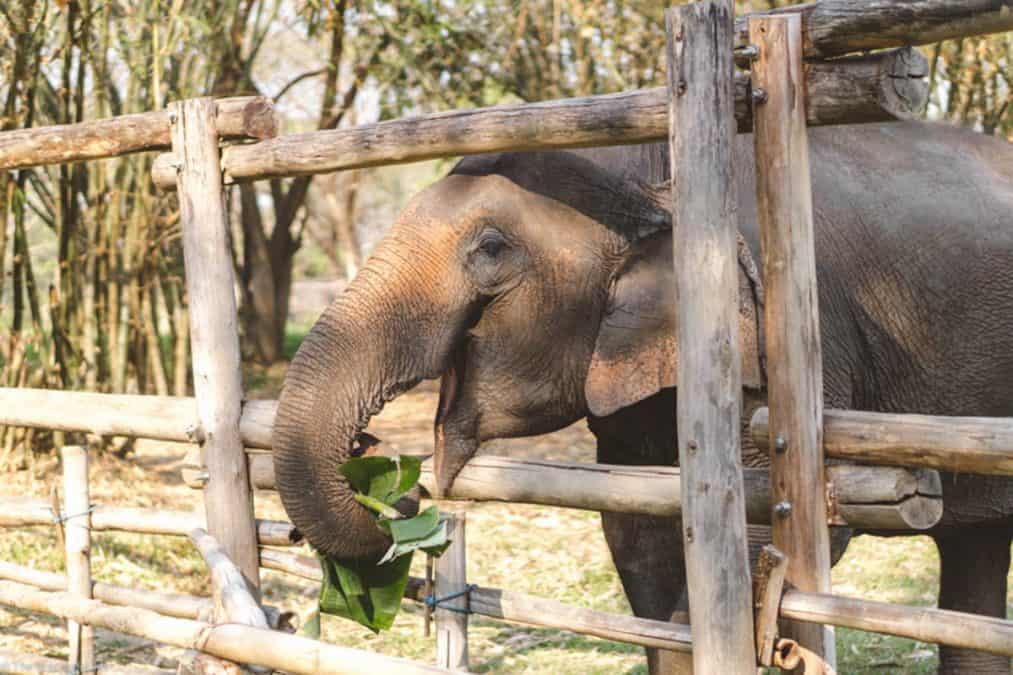
Recommended by Sophie of The Wanderful Me
It seems as though one of the quintessential things to do when backpacking or living in Thailand is having an authentic elephant experience. No doubt, Thailand (especially the northern area around Chiang Mai) is one of the best places to see and admire elephants in their natural habitat… but what many travelers don’t know is that many so-called “ethical elephant sanctuaries” aren’t really ethical at all.
Unfortunately, many places market themselves as “sanctuaries” to play on the emotions of well-meaning tourists (when, in fact, they actually treat their elephants like garbage). Elephant Valley Thailand was founded to change all that.
Without a doubt, this is the most ethical elephant sanctuary in Thailand! Founded on the basis of rescuing, rehabilitating, and returning elephants to their natural environment, EVT attempts to limit human-elephant interactions to keep things as wild as possible for the animals.
Unlike other elephant attractions, EVT features absolutely no riding, no bathing, and no up-close encounters. Heck, they don’t even allow visitors to get close to the elephants for feeding! You simply hand over some banana leaves and bamboo through a double-walled fence. Now that’s what I call ethical!
When planning your visit to EVT, there are a few options you can go with: half-day tour (either morning or afternoon), full-day tour, full-day volunteer tour, or half-day tour + overnight stay. I highly recommend the overnight stay! It’s absolutely magical waking up to the elephants trumpeting in the morning.
So, if you’re yearning to have your own ethical wildlife experience in Thailand, make sure to give all your crisp Thai Baht over to Elephant Valley Thailand. Because there’s no doubt about it — this elephant sanctuary is the most ethical one in the country!
For more ethical elephant encounters in Asia and Africa, be sure to check out this post!
Best Wildlife Experiences in Africa
23. Elephant Conservation in Malawi
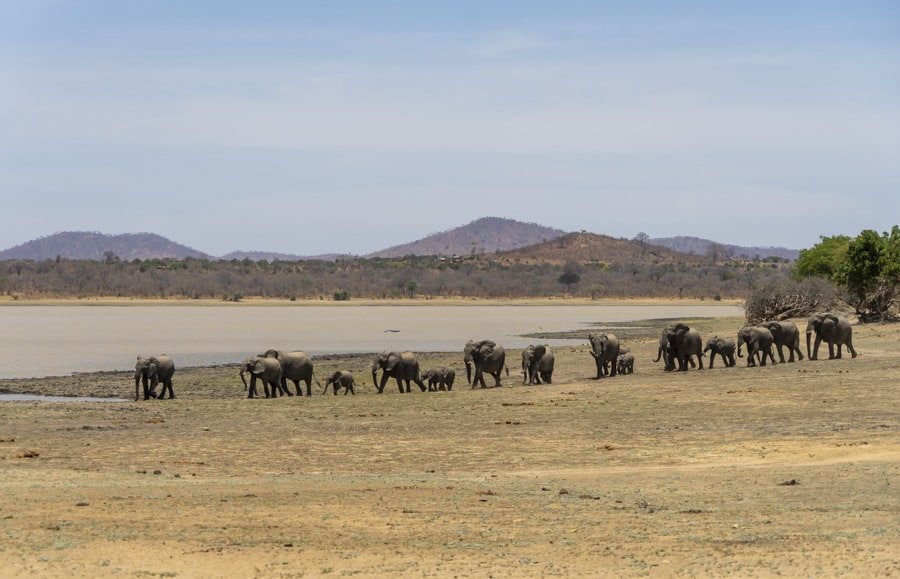
One of the best ways to see elephants ethically in Africa is to volunteer on a conservation project. I spent some time volunteering on a project with Biosphere Expeditions at the Vwaza Marsh Game Reserve in Northern Malawi, which was an incredible experience.
As a participant/research assistant, we spent our days helping scientists with various projects in the reserve to assess the nature and patterns of biodiversity. The reserve is home to four out of big five animals in Africa, including buffalo, leopards, lions, and elephants. There are also monkeys, antelope, birds, bats, and a variety of other wildlife.
We saw elephants on a daily basis, either from base camp, or during our daily walks and game drives. Often, we would be road-blocked by them! Getting to see giant herds of elephants in their natural environment was an experience I’ll never forget.
24. Giraffes in Nairobi
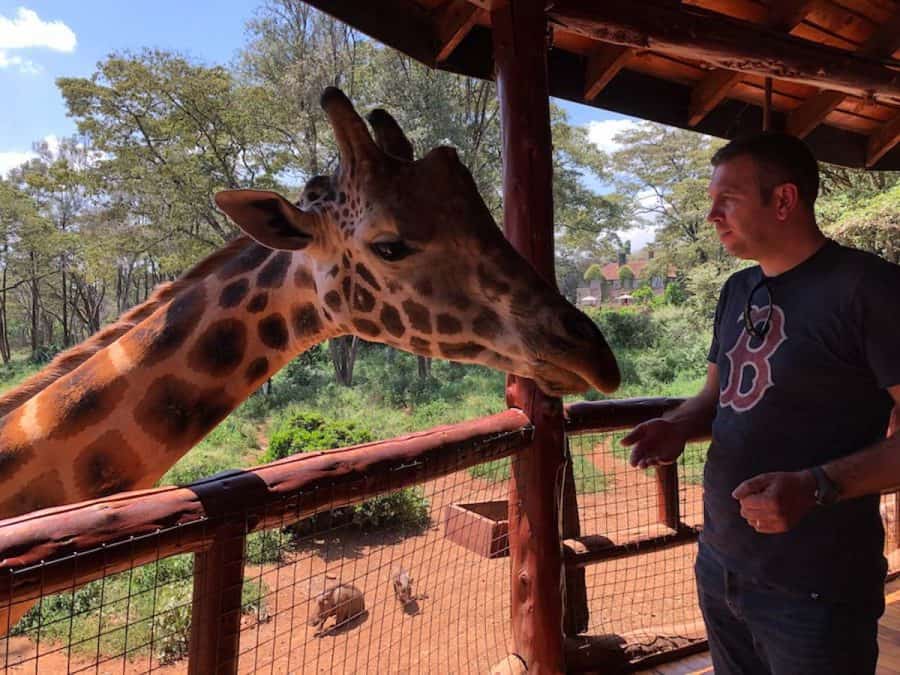
Recommended by Paul of The Two That Do
The African Fund for Endangered Wildlife Giraffe Centre located 20 km southwest of Nairobi is a non-profit organization established in 1979.
In addition to breeding endangered Rothschild Giraffe and releasing them into the wild, the Centre has the mandate to educate Kenyan school children on wildlife and environmental issues. Key demonstration projects include waste management, tree nursery, and biomass fuel production.
For just 1,500 Kenyan Shillings equivalent to £10.00 or $14.00 international visitors can learn about such initiatives, attend informative lectures and come in to close contact with a number of the Centre’s Rothschild Giraffes.
The opportunity to feed Giraffes pellets made of corn, wheat, grass, and molasses from the central platform should not be missed. These are tall, graceful animals, and it is an honor to interact with them. The feel of their long tongues as they take the pellet from your hands is unforgettable.
Afterward, take in the mile-long nature walk and visit the souvenir shop selling gifts made by local children and villagers. All proceeds go toward the hugely important education programs and the breeding and repopulation program.
25. Penguins in South Africa
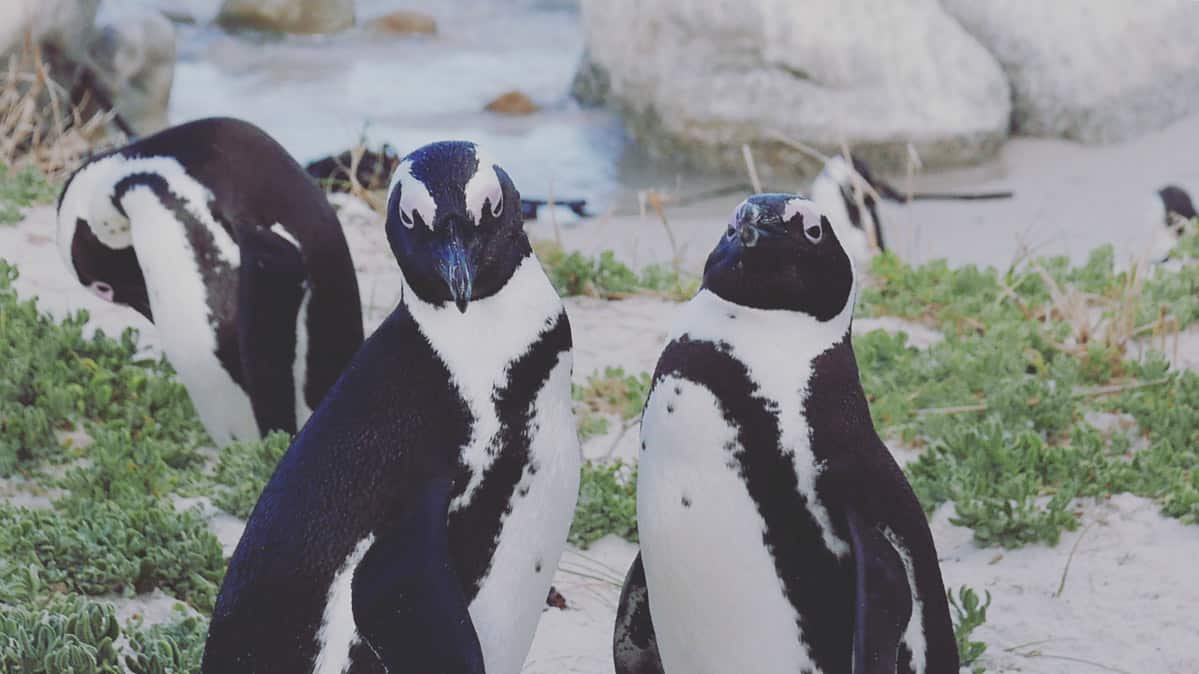
Recommended by Kenny of Knycx Journeying
Cape Town in South Africa is one of the most beautiful cities in the world, nestling in the majestic Table Mountain, and in the north of the Cape of Good Hope. Simon’s Town is a small settlement in the south of Cape Town, with a number of intimate cafes, shops, and hostels that still retain a magical Victorian charm during the colonial times.
Boulders Beach is located offshore of Simon’s Town, and it is one of the few colonies in Africa for the African penguin (or, the “Jackass” penguin). The beach is not for tourists to go sunbathing or swimming, rather, it is a sanctuary for this fascinating wild creature to find shelter, food, and mate.
Currently, about two thousand endangered penguins call this place home; and the beach is fenced off and protected as part of the Table Mountain National Park since 1998.
The population of penguins has improved as they bred in this colony. Today, thousands of tourists come here every day to observe the adorable penguin’s way of life, and they are only allowed to view them from a wooden boardwalk that is elevated above the beach, with the purpose to give space to the birds. However, you may still take a closer look at these birds, if one of them wander off and stumble into the human path.
Check out this guide for more places to see penguins in the wild!
26. Rhinos in Kenya
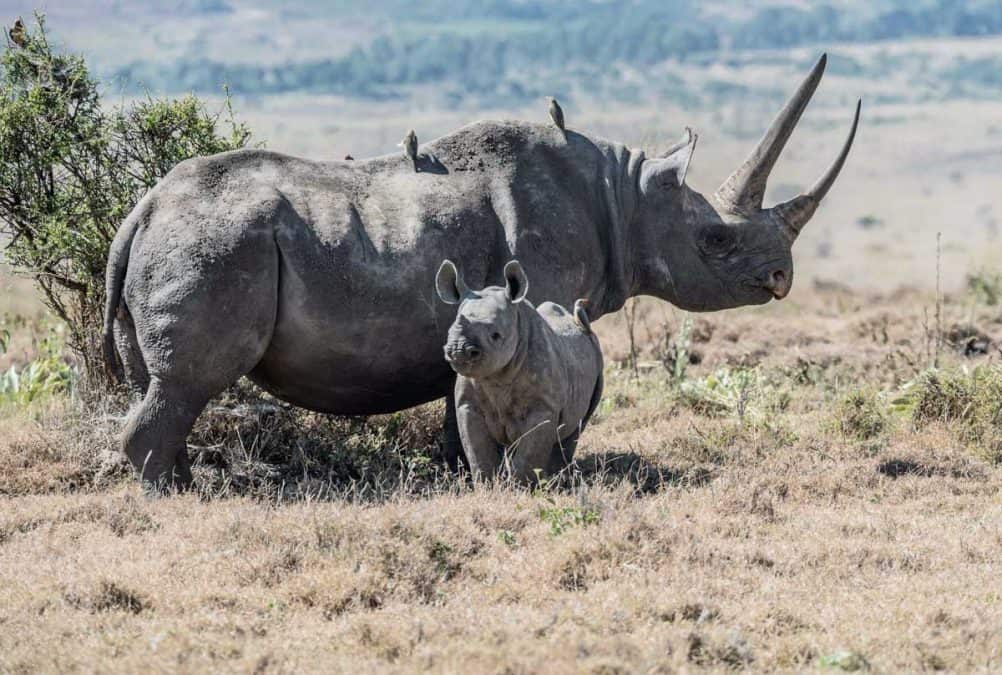
Recommended by Stephanie of Book It Let’s Go
Ngulia Rhino Sanctuary is located in Tsavo West National Park in Kenya. Ngulia Rhino sanctuary has around 80 black rhinos in an area of land 90km square that is sectioned off from the main park by an electric fence and has 24-hour security patrols to protect the rhinos from poachers.
Throughout the sanctuary are many dirt tracks to the various watering holes to hopefully spot the rhinos, and you can visit as part of a Tsavo National Park Safari itinerary.
The sanctuary is only open from 4 pm to 6.30 pm as rhinos are nocturnal, and this is when they are more likely to be active. There is no guarantee of spotting them, however, as they are timid and elusive, and as browsers, not grazers, they spend most of their time in the thick undergrowth.
The Sanctuary was founded with just 3 rhinos in 1986 after a surge in poaching in the 1970s and 1980s took their number in Kenya from 20,000 to just 700. After a successful breeding program within the sanctuary, 15 black rhinos have now been reintroduced to Tsavo national park under the park rangers’ watchful eyes, who are equipped with GPS trackers to keep tabs on where the rhinos are at all times.
27. Big 5 in South Africa
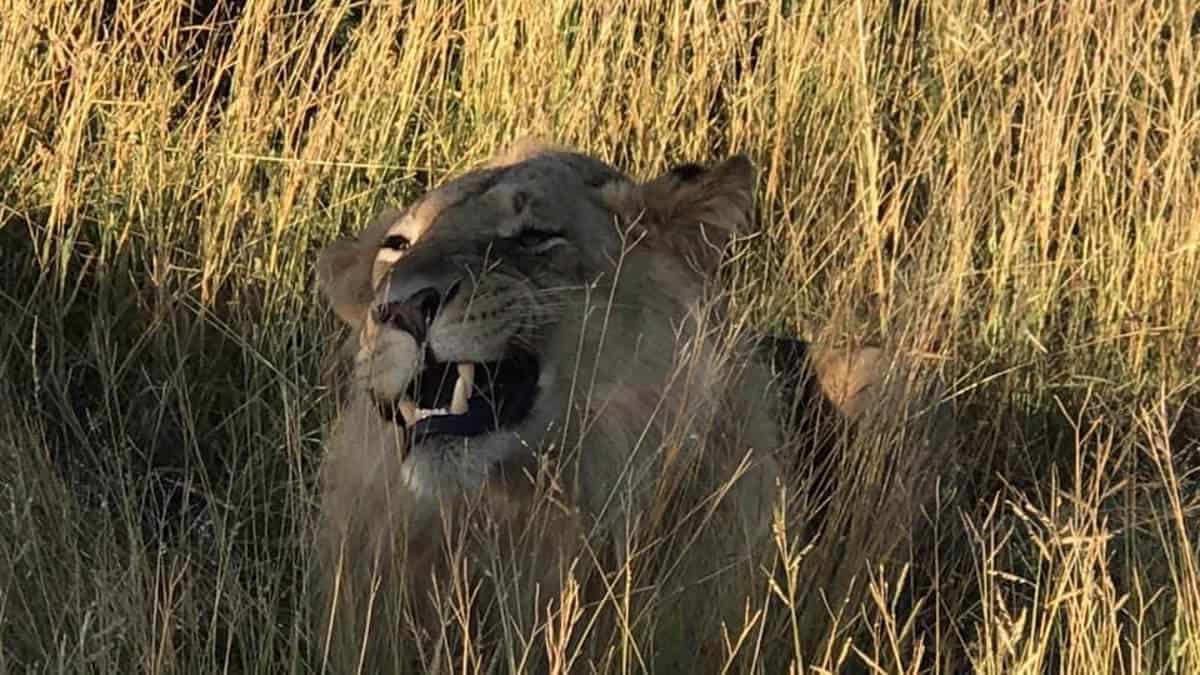
Recommended By Nicole of Affordable Family Travel
Etali Safari Lodge located in Madikwi Game Reserve, South Africa, is one of the best ethical wildlife experiences in the world. Madikwe Game Reserve was established for wildlife conservation.
Visitors can experience wildlife in their natural habitat from a safe distance, either from Etali Safari Lodge which overlooks a watering hole and surrounding park, as well as through game drives which are included with your stay. At the reserve, you can see the Big 5 animals as well as cheetahs and African wild dogs.
The resort offers some cultural experiences such as a Braai (African BBQ) around their large fire pit overlooking the watering hole. Several rooms also offer watering hole views which allow you to enjoy wildlife viewing from your deck or inside your room. The Resort is eco friendly and provides glass water bottles that you utilize throughout your trip to cut down on plastic.
Etali helps you share in the conservation experience by learning about how they work to introduce new animals into the reserve. Many of these new animals come from breeding programs. It’s amazing to hear about the success they have had breeding animals in captivity and introducing them into the wild.
28. Leopards in Zambia
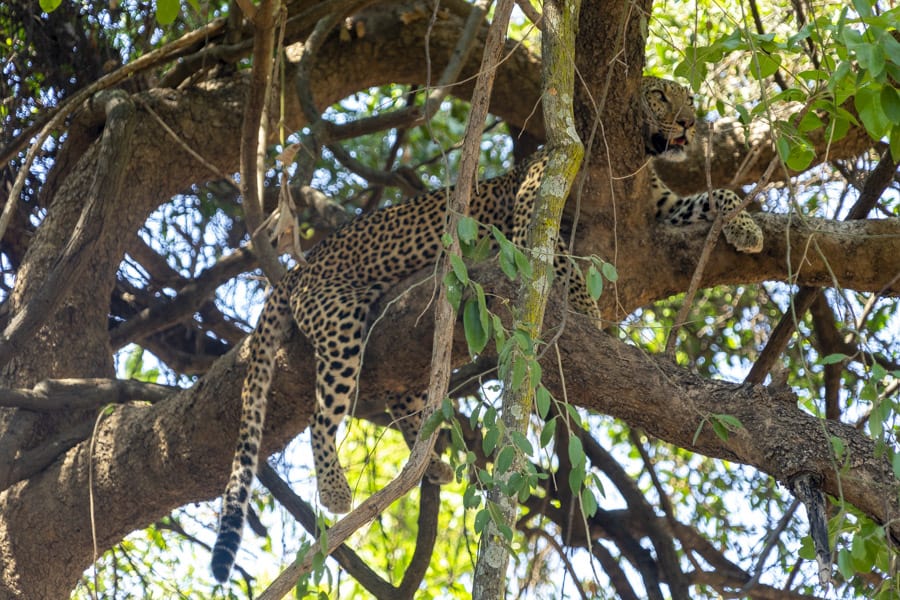
Although leopards live in several African countries, they are one of the more elusive animals to see. Leopards are nocturnal, which makes spotting them difficult to see during the day when most game drives take place.
I decided to try my luck on a safari at South Luangwa National Park in Zambia. It has the nickname ‘valley of the leopards’ due to its thriving leopard population. South Luangwa is also one of the few national parks in Africa offering game drives during the night.
On our first night time game drive, we were lucky enough to see a leopard take down an impala. The next morning, we returned to the site where the leopard had brought its prey. The impala was hanging over the tree half-eaten, with optimistic hyenas patiently waiting below. Nearby was the leopard, peacefully sleeping on the top of another tree, well-fed from the night before. It was one of the best wildlife experiences I’ve ever encountered!
Best Wildlife Experiences in Australia & New Zealand
29. Tasmanian Devil’s in Australia
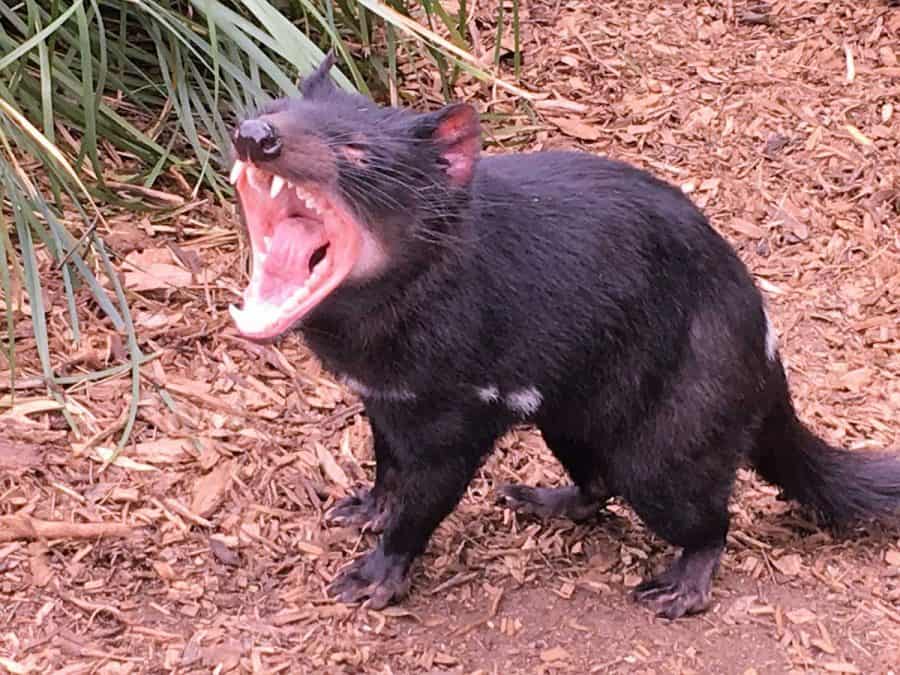
Recommended by Talek of Travels with Talek
The word Bonorong means native companion in the Aboriginal language. It is a sanctuary for wildlife run by people who love animals and are deeply concerned about their health and conservation. Largely funded by donations and admission fees, Bonorong runs a 24/7 animal rescue sanctuary in addition to housing and caring for local wildlife.
A visit to Bonorong is a chance to come face to face with animals that went extinct in other parts of Australia but are being protected at the sanctuary so they can flourish there.
Bonorong Wildlife Sanctuary in Australia’s southeastern island of Tasmania is home to many protected animals, but the legendary Tasmanian Devil is the main attraction. These rodent-like carnivorous marsupials were recently infected with a virus that caused facial disfigurement and the inability to feed themselves. Bonorong was involved in research and care of these interesting creatures. As a result, the local Tasmanian Devils are now on the rebound.
One of Bonorong’s main attractions is feeding time where visitors see the local animals in their habitat. The convalescent kangaroo section is also interesting and shows that animals can come back from injury and disease with loving, compassionate, professional care. If you are in Tasmania, and you love animals, Bonorong is definitely worth a visit.
30. Wombats in Tasmania
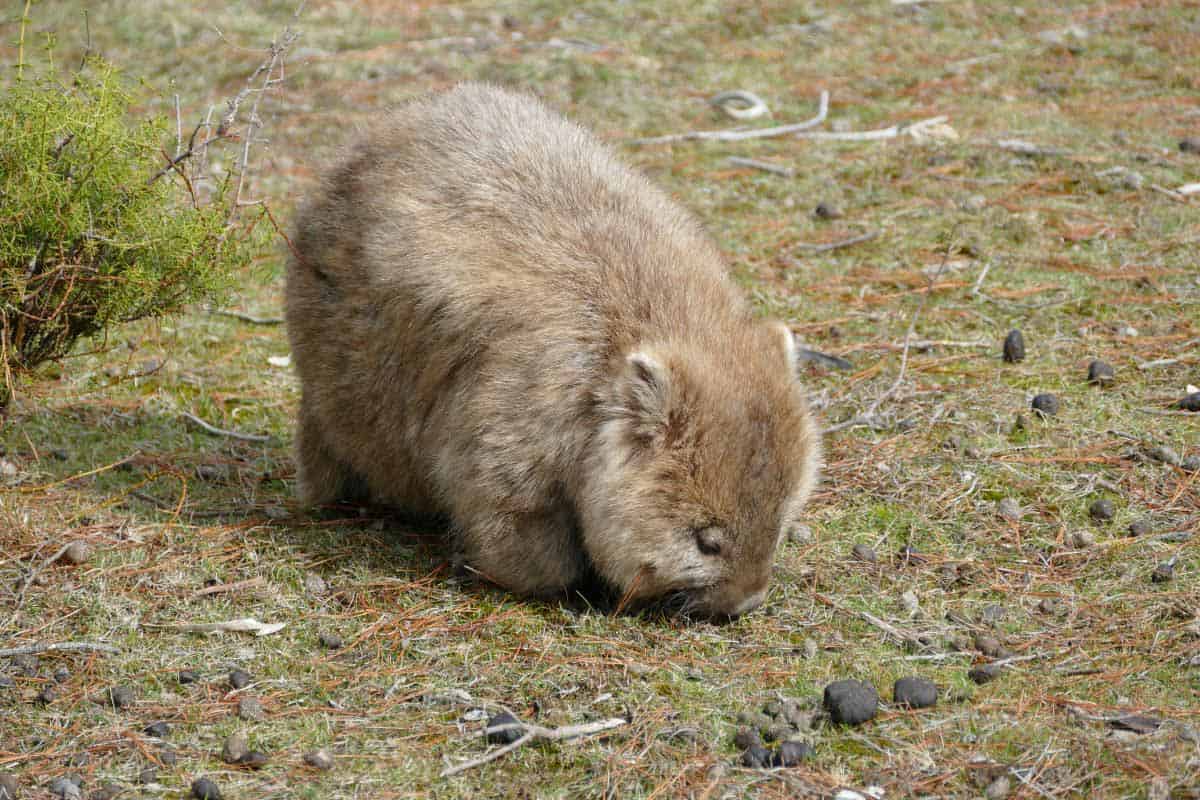
Recommended by Natalie & Steve of Curious Campers
Maria Island National Park is a 20-minute ferry ride from Triabunna on the east coast of Tasmania, Australia. It’s a wildlife haven. The island is home to kangaroos, wallabies, Tassie devils, wombats, and a diverse range of birds.
Visitors to the island are asked to take the Maria Island Wildlife Pledge. It asks visitors to ‘respect and protect the furred and feathered residents of Maria’ and not chase animals around trying to get selfies.
To find the wildlife, you need only go on any of the walks around the island’s coastline, bushland or mountains. The stars of this beautiful place are the wombats. They’re everywhere and are the cutest things you’ll ever see!
Maria Island is also an important site for both convict history and the early European settlement of Tasmania.
There is a regular ferry service to Maria Island. You can see much of the island on a daytrip from Hobart. Overnight stays are possible but accommodation is limited to a basic bunkhouse or campsites. You’ll need to take all bedding, food, and cookware with you.
Bikes can be hired on the island. Whether you explore by foot or bike, it’s a wildlife experience you won’t soon forget.
31. Dolphins in New Zealand
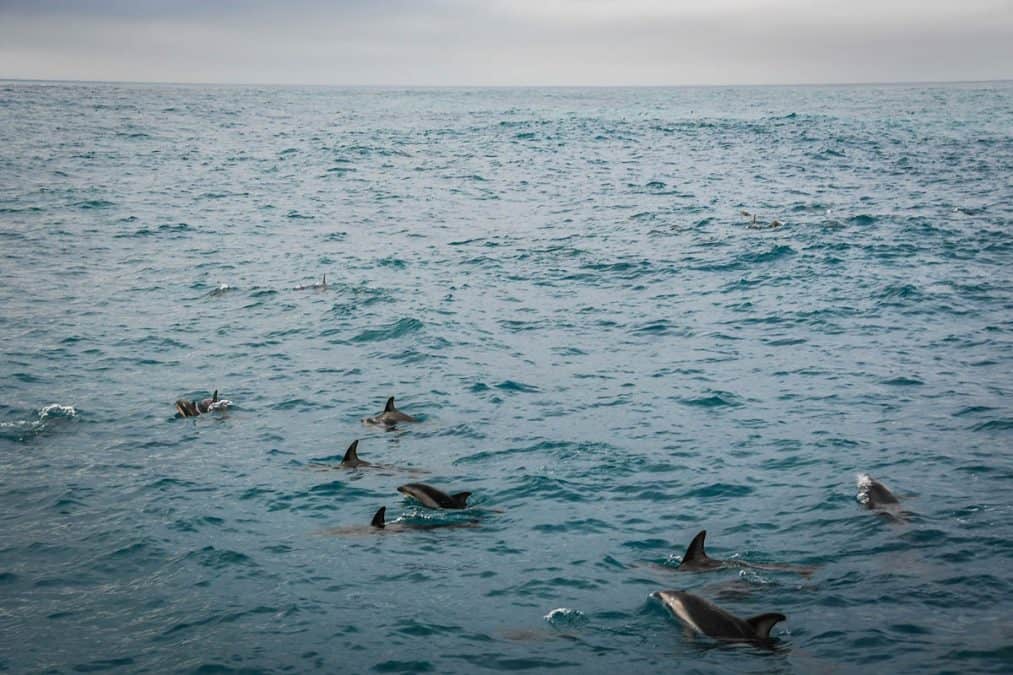
Recommended by Katie & Ben of Two Wandering Soles
In decades past, most opportunities to swim with dolphins were from the confines of captivity. Responsible travelers will be happy to learn that there are a handful of places around the world where you can swim with dolphins ethically.
If this experience is on your bucket list, there are few better places in the world to bring this dream to life than in New Zealand. The small coastal town of Kaikoura is situated on the east coast of New Zealand’s south island and is one of the best places in the country to spot marine life like whales and dolphins.
There is only one company in town that offers guests the chance to swim with wild dolphins in their habitat. Aptly named, Dolphin Encounters takes small boats out three times daily into the waters just off the coast. This area is home to a few different dolphin species, but the one that is most interested in approaching humans is the small and playful dusky dolphin.
Once you get the go-ahead from the guides, you can jump in the water and wait for the wild dolphins to approach you. Be warned — the water off the coast of Kaikoura is extremely cold! Even with the wetsuit, hood, and booties that the company provides, be prepared to shiver a bit. But enduring those goosebumps is well worth it once you spot the friendly dusky dolphins that’ll no doubt surround you soon after jumping in the water.
Dusky dolphins are known for their playful and curious nature, and you’ll likely see them showing off by jumping and flipping about. Being there in the midst of their pod is an unparalleled experience. Be sure to pack a GoPro or other waterproof camera to capture this once in a lifetime experience! Once you’re back on the boat, you can change into dry clothes and warm up with some hot cocoa and cookies while you process what you just encountered!
—
FAQ: Wildlife Experience Around The World
What is the best place in the world to see wildlife?
The best place to see wildlife varies based on what you’re looking to see, but destinations like the Galapagos Islands, Serengeti National Park in Tanzania, and the Amazon Rainforest are renowned for their rich and diverse wildlife.
Which country has the best wildlife?
Countries like Brazil, with the Amazon Rainforest, and Tanzania, home to the Serengeti, are often celebrated for having some of the best wildlife due to their diverse ecosystems and large numbers of unique species.
Where are the most wild animals in the world?
The Amazon Rainforest, spanning several South American countries, is known for having the highest concentration of wildlife on Earth, with its vast biodiversity.
What animal lives on all 7 continents?
Birds, particularly species like the snowy owl and wandering albatross, are known to inhabit all seven continents.
Which continent has the best wildlife?
Africa is often hailed as the continent with the best wildlife, especially for its large mammals and diverse ecosystems, including savannas, rainforests, and deserts.
What is the most unique animal in the world?
The Platypus, native to Australia, is often considered one of the most unique animals due to its unusual combination of traits, including laying eggs, having a duck-like bill, and being venomous.
What is the wildlife capital of the world?
Kruger National Park in South Africa is often referred to as the wildlife capital of the world, offering some of the most diverse and accessible wildlife viewing opportunities.
What is the most wildlife friendly city in the world?
Singapore is renowned for its wildlife-friendly urban planning, integrating green spaces and biodiversity conservation into its cityscape.
What country protects wildlife the most?
Costa Rica is often cited as a leader in wildlife protection, dedicating a significant portion of its land to national parks and reserves and focusing on eco-tourism.
What is the world’s largest wildlife sanctuary?
The Northeast Greenland National Park is the world’s largest wildlife sanctuary, covering an area of about 972,000 square kilometers.
There you have it, 30 amazing wildlife experiences around the world to add to your travel bucket list. Thank you to all the bloggers that contributed to this post, I’ve certainly added some of these places to my ever-growing list. Let me know in the comments below which wildlife experience you would love to try!
Enjoyed this post? Pin it for later!


I love wildlife experiences when I travel somewhere. It’s a real highlight for me and a good reason why I’d visit somewhere. I saw Tasmanian Devils the last time I was in Australia (although a different sanctuary) and having learnt about them they’re now one of my favourite animals. Looking for puffins would be another from the list I’d really like to do and Faroe Islands is on my list, so a great option for the future. Thanks for sharing this list.
Same here! I would love to see the Tasmanian Devils, they look so cute. If you want to see puffins you should check out Newfoundland!